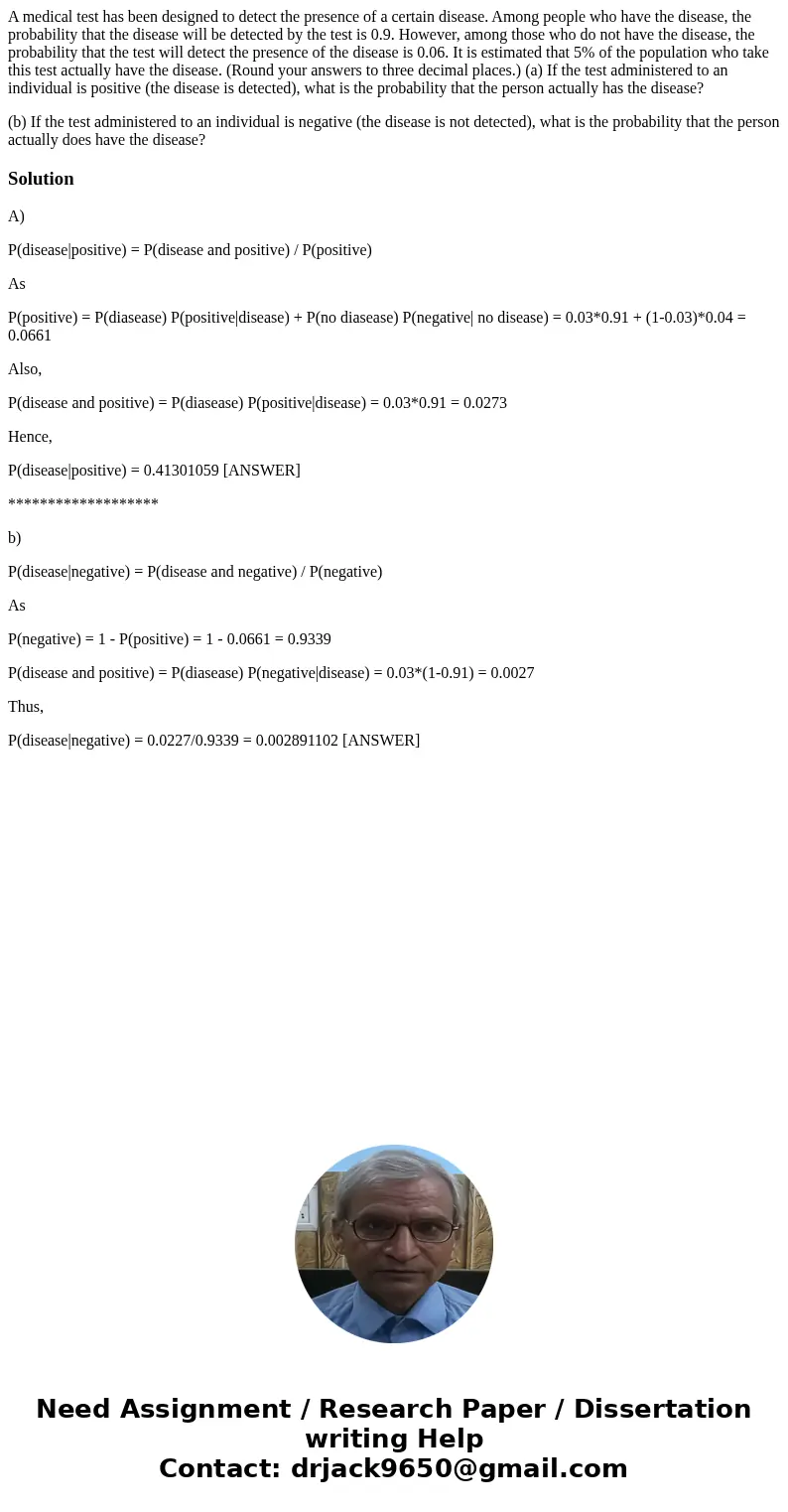A medical test has been designed to detect the presence of a
A medical test has been designed to detect the presence of a certain disease. Among people who have the disease, the probability that the disease will be detected by the test is 0.9. However, among those who do not have the disease, the probability that the test will detect the presence of the disease is 0.06. It is estimated that 5% of the population who take this test actually have the disease. (Round your answers to three decimal places.) (a) If the test administered to an individual is positive (the disease is detected), what is the probability that the person actually has the disease?
(b) If the test administered to an individual is negative (the disease is not detected), what is the probability that the person actually does have the disease?
Solution
A)
P(disease|positive) = P(disease and positive) / P(positive)
As
P(positive) = P(diasease) P(positive|disease) + P(no diasease) P(negative| no disease) = 0.03*0.91 + (1-0.03)*0.04 = 0.0661
Also,
P(disease and positive) = P(diasease) P(positive|disease) = 0.03*0.91 = 0.0273
Hence,
P(disease|positive) = 0.41301059 [ANSWER]
*******************
b)
P(disease|negative) = P(disease and negative) / P(negative)
As
P(negative) = 1 - P(positive) = 1 - 0.0661 = 0.9339
P(disease and positive) = P(diasease) P(negative|disease) = 0.03*(1-0.91) = 0.0027
Thus,
P(disease|negative) = 0.0227/0.9339 = 0.002891102 [ANSWER]

 Homework Sourse
Homework Sourse